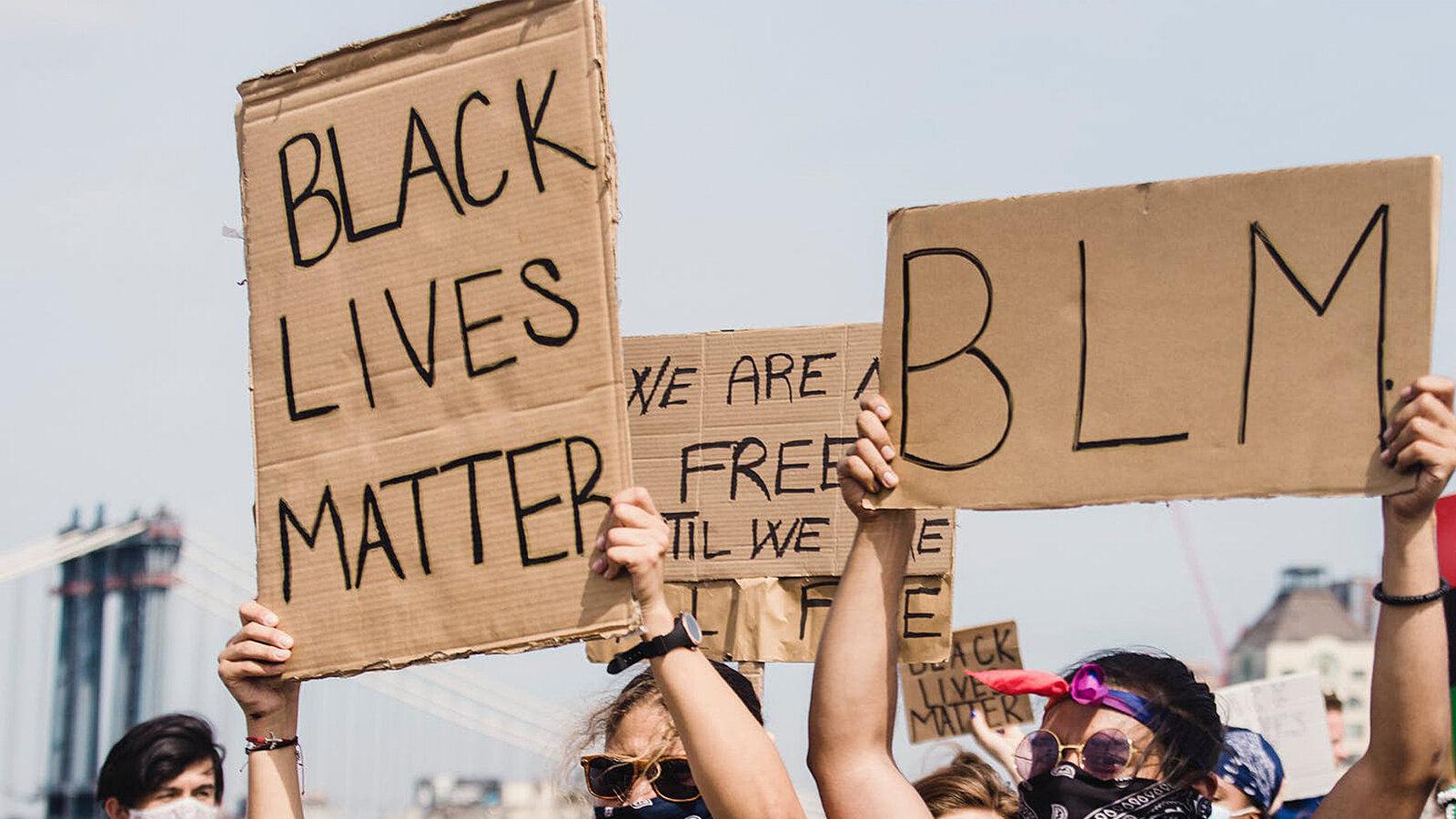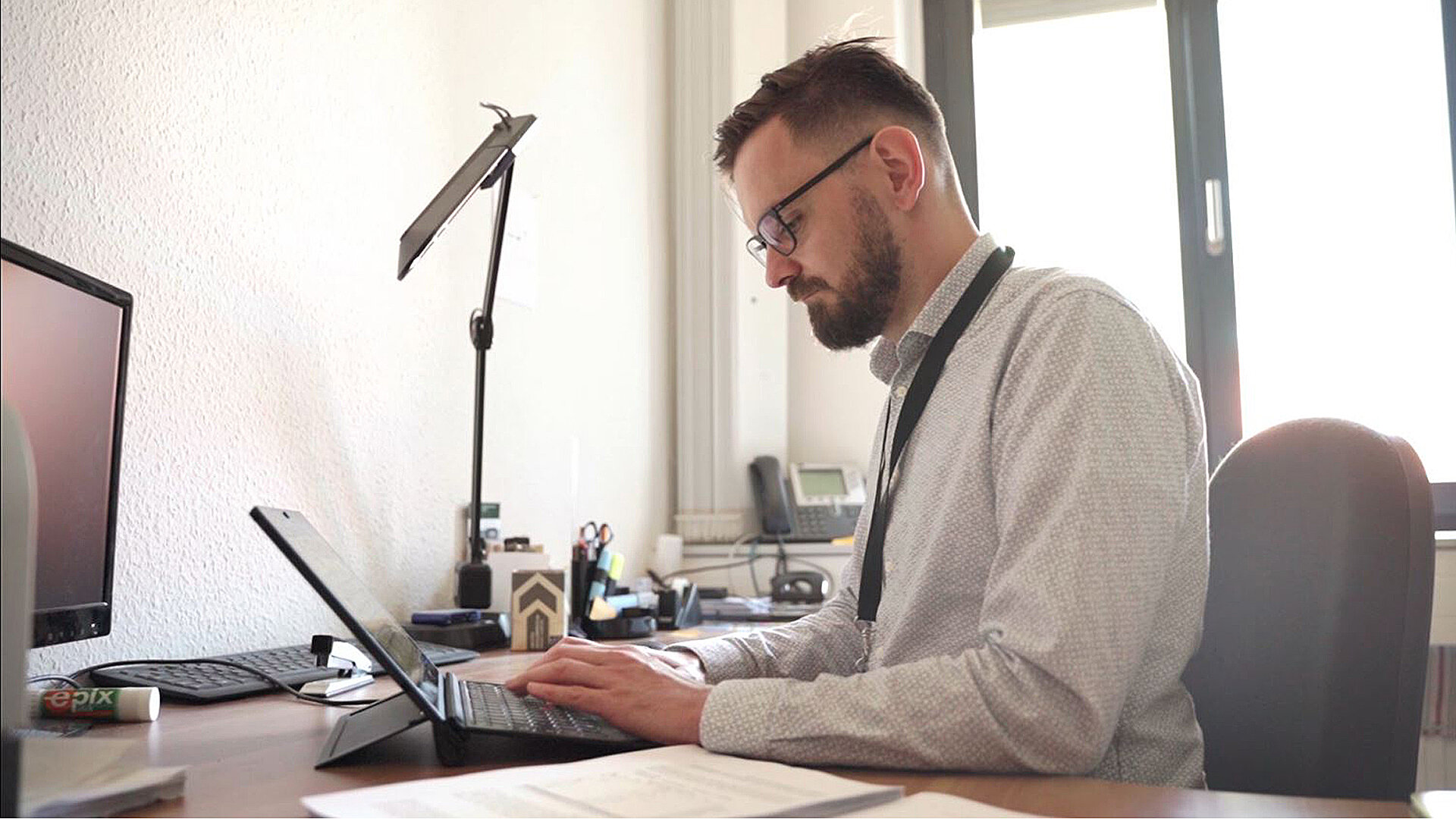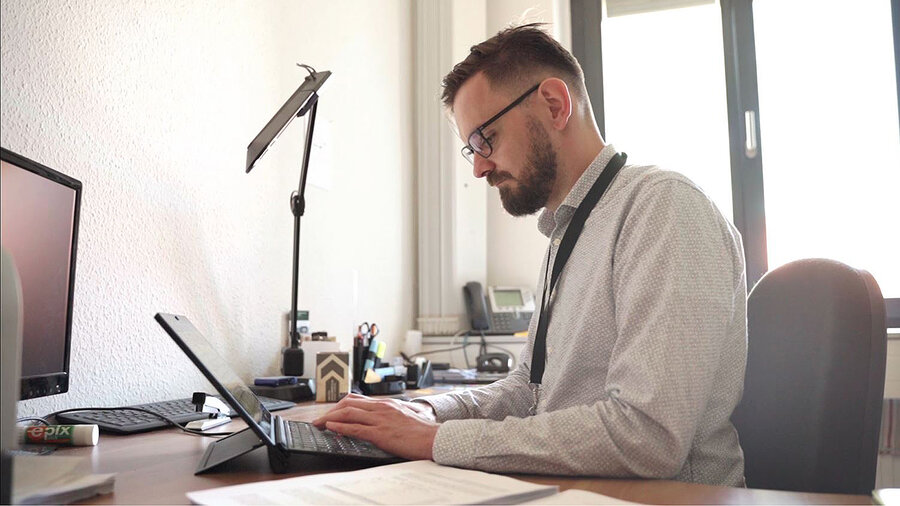Black Lives Matter in Europe: What Remains of the Movement?
International research team with participation from Chemnitz University of Technology studied activists and the organizational structure of BLM in four European countries - Particularly large rallies in Germany and Denmark
-

An international research team with participation from Chemnitz University of Technology has studied and compared the size, form, and resonance of BLM protests in Germany, Italy, Denmark, and Poland. Photo: LifeMatters (pexels.com/CC 0: https://www.pexels.com/de-de/foto/menschen-die-protestieren-und-zeichen-halten-4614160/) -

Dr. Piotr Kocyba's research includes protest movements on an international scale. Photo: Screenshot (Chemnitz University of Technology)
The violent death of George Floyd at the hands of a white police officer in Minneapolis on May 25, 2020, sparked protests across the U.S. that soon after spilled over into Europe and other regions of the world. Under the slogan "Black Lives Matter" (BLM), a worldwide protest movement formed after Floyd's death to demonstrate against racism and police violence. How did the protests form in Europe? Who were the organizers in the countries, and what remains of the movement - especially after the conviction of Floyd's murderer?
An international research team with participation from Chemnitz University of Technology has studied and compared the scope, form, and resonance of BLM protests in Germany, Italy, Denmark, and Poland. Part of the team was Dr. Piotr Kocyba, research assistant at the Professorship for Central and Eastern European Studies (Head: Prof. Dr. Stefan Garsztecki) at Chemnitz University of Technology. Kocyba conducted research in Poland for this study.
The researchers show different characteristics and emphases of the protests in the countries studied. In addition, they conclude that the BLM protest wave mobilized new activists and gave rise to new organizations. In addition, they say, the issues of racism and police violence have become more prominent in the public's mind. Still, BLM in Europe is still at the beginning, he said.
The results of the study have been published in the DeZIM Research Note series with the title "Black Lives Matter in Europe - Transnational Diffusion, Local Translation, and Resonance of Anti-Racist Protest in Germany, Italy, Denmark, and Poland" and are available online. The study was conducted for the German Center for Integration and Migration Research DeZIM e. V., which is funded by the German Federal Ministry for Family Affairs, Senior Citizens, Women, and Youth (BMFSFJ).
Particularly large rallies in Germany and Denmark
The data collected was based on newspaper reports and interviews with organizers of the protests. This revealed similarities in the form of the protests, which were often organized by young Black and People of Color (PoC) activists. It was also noticeable that they rarely had protest experience or connections to established social movements. However, there were also striking differences in the size and geographic distribution as well as the orientation of the protests.
Accordingly, the rallies have been particularly large in Germany, with a focus on Berlin and Munich, but also in Denmark. In Italy, there have been the most protests. Thus, about 200,000 people in Germany had participated in more than 80 rallies between the end of May and the end of July 2020.
Moreover, the protests were driven by solidarity with the movement in the United States. However, the basic themes were each "translated" into a specific local context.
Dealing with racism in one's own country - refugees less in focus at BLM protests in Germany than in Italy or Denmark
For example, the BLM protests represented a turning point for the racism debate in Germany. The protests have raised awareness here that racism is about more than individual prejudices or even right-wing extremist ideologies - but that it is also a structural problem. In addition, there has been a positive response to the protests, in part because PoC activists were able to speak out publicly for the first time.
Basically, in the course of the BLM protests, Germany also dealt extensively with racism in its own country. In Germany, however, there was little or no discussion of the situation of refugees, who were one of the main focuses of the protests in Italy and Denmark.
Domestic political disputes are the main focus in Poland
Dr. Piotr Kocyba experienced a different situation in Poland, which was the focus of his research. According to him, there were clear differences in the composition of the protesters here in comparison. While in Germany more young black women became active, in Poland it was mainly white activists who took to the streets.
In general, the BLM protest wave in Poland was overshadowed by internal political disputes, which also explain the comparatively low level of mobilization. For example, there were only 17 BLM protests in Poland, in which a total of only about 7,000 people participated.
Another specific feature in Poland was the presidential elections, which took place during the international BLM protest wave. In the course of these, the re-elected president Andrzej Duda increasingly put forward homophobic content. Because of this, the focus of protests in Poland has increasingly shifted. This has led progressive activists to advocate primarily for the rights of the LGBTIQ+ community during the BLM Summer 2020 in Poland.
BLM protests in Europe - breakthrough of a new movement?
The BLM Summer 2020 protest wave mobilized new activists, gave rise to new organizations, and made the issues of racism and police violence the focus of public debates. Also, in Germany, for example, with the Cabinet Committee to Combat Right-Wing Extremism and Racism, the first concrete political successes can be recorded. "Nevertheless, the BLM movement is at its very beginning," says Piotr Kocyba. "Under the difficult conditions of the pandemic, people have managed to network and draw public attention to their own concerns. But whether it will have a lasting effect, in other words, whether individual BLM movements will be able to establish and develop in the various European societies, remains to be seen." This exciting question will be pursued in a follow-up project that will allow for a more intensive as well as longer-term investigation of European BLM movements. A consortium to this end is currently being established.
Publication: Noa Milman, Folashade Ajayi, Donatella della Porta, Nicole Doerr, Piotr Kocyba, Anna Lavizzari, Herbert Reiter, Piotr Płucienniczak, Moritz Sommer, Elias Steinhilper and Sabrina Zajak. Black Lives Matter in Europe: Transnational Diffusion, Local Translation and Resonance of Anti-Racist Protest in Germany, Italy, Denmark, and Poland. DeZIM Research Notes July 6, 2021. https://www.dezim-institut.de/fileadmin/Publikationen/Research_Notes/DeZIM_Research_Notes_06_RZ_210702_web-1.pdf
Background: The DeZIM Institute
The German Center for Integration and Migration Research (DeZIM) is a research institution funded by the German Federal Ministry for Family Affairs, Senior Citizens, Women, and Youth (BMFSFJ). It conducts research on integration and migration, consensus and conflict, and social participation and racism. DeZIM was founded in 2017 and is based on two pillars: the DeZIM Institute and the DeZIM Research Community. The DeZIM Institute is located in Central Berlin.
For more information, contact Dr. Piotr Kocyba, phone +49 (0)371 531-38521, email piotr.kocyba@phil.tu-chemnitz.de.
(Author: Matthias Fejes / Translation: Chelsea Burris)
Multimedia:

Embedding of external provider's content
The display of embedded external content of the platform YouTube on the website of Chemnitz University of Technology and therefore the connection to the external server of the platform provider requires your consent before. First when you have given your consent for this provider (personal) data will be transmitted to the external server operator so that the content display can take place. The operator may be located in a non-European country.
With submitting the button you agree formally and voluntarily that you personal data as described in the Data Protection Policy with its there specified purposes will be processed for embedding of external content on the website of Chemnitz University of Technology. Your consent can be revoked separately or as a whole at any time without undue disadvantages for the future.
Matthias Fejes
10.08.2021




